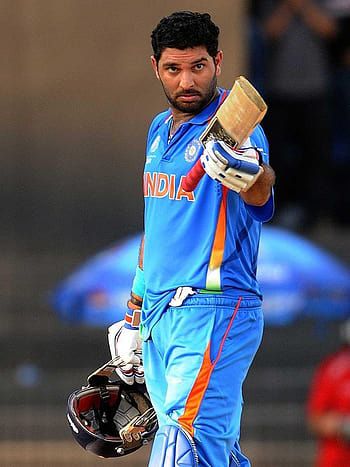Irfan Pathan: The Swinging All-Rounder of Indian Cricket
Introduction:
Irfan Pathan, a talented left-arm swing bowler and a valuable lower-order batsman, made a significant impact during his international cricket career. Known for his ability to swing the ball both ways and his handy contributions with the bat, Pathan emerged as a promising talent for the Indian national cricket team. In this blog, we delve into the life and career of Irfan Pathan, a true all-rounder who left an indelible mark on Indian cricket.
Early Life and Rise to Prominence:
Born on October 27, 1984, in Vadodara, Gujarat, Irfan Pathan hails from a family of cricketers. His father, Mehmood Khan Pathan, was a club-level cricketer, and his brother, Yusuf Pathan, also went on to represent India. Irfan’s journey to cricketing stardom began at a young age when he caught the attention of selectors with his swing bowling skills.

International Debut and Early Success:
Irfan Pathan made his international debut for India in December 2003, at the age of 19, against Australia in Adelaide. He impressed right from the start, showcasing exceptional swing bowling and a mature batting technique. Pathan’s ability to swing the ball both ways at a lively pace made him a potent weapon in the Indian bowling attack.
Memorable Performances:
- Pathan’s Hat-Trick: In 2006, during the third Test against Pakistan in Karachi, Pathan etched his name in cricket history by becoming the first Indian bowler to take a Test hat-trick. He dismissed Salman Butt, Younis Khan, and Mohammad Yousuf in consecutive deliveries, setting the tone for a memorable victory for India.
- All-round Heroics: Pathan played a crucial role in India’s victory in the 2007 ICC World Twenty20. He was the Man of the Match in the final against Pakistan, scoring a quickfire 3-ball 15 and taking 3 wickets to help India clinch the title.
Contribution as an All-Rounder:
- Swing Bowling: Pathan’s ability to swing the ball both ways troubled batsmen around the world. His natural swing and deceptive variations made him a formidable force, especially in helpful bowling conditions. Pathan’s swing bowling skills were honed under the guidance of bowling coach Venkatesh Prasad, and he became an integral part of India’s bowling attack.
- Batting Prowess: Pathan’s contributions with the bat, particularly in the lower order, were invaluable for India. He possessed a compact technique and a wide range of strokes, allowing him to counter-attack and score crucial runs when the team needed them the most.
Irfan Pathan, a left-arm swing bowler and a handy batsman, had a notable international and domestic cricket career. Here’s an overview of his achievements and contributions:
International Career:
Irfan Pathan represented the Indian national cricket team from 2003 to 2012. He made significant contributions with both bat and ball, especially in the early years of his career.
Test Cricket:
- Pathan made his Test debut against Australia in December 2003 at the age of 19.
- He was known for his ability to swing the ball both ways and provided early breakthroughs for the team.
- Pathan’s best Test performance came against Pakistan in 2006, where he claimed a hat-trick in the first over of the match.
- In his Test career, he played 29 matches, scoring 1,105 runs at an average of 31.57, including one century and six fifties. He also picked up 100 wickets at an average of 32.26.
One-Day Internationals (ODIs):
- Pathan made his ODI debut against Australia in 2004.
- He was a vital member of the Indian team, particularly in limited-overs cricket.
- Pathan’s all-round abilities, swinging the ball and contributing with the bat, made him a valuable asset.
- He played 120 ODIs, scoring 1,544 runs at an average of 23.39, including two centuries and five fifties. He also took 173 wickets at an average of 29.72.
T20 Internationals:
- Pathan played 24 T20I matches for India, scoring 172 runs at an average of 17.20 and taking 28 wickets at an average of 20.89.
Domestic Career:
In domestic cricket, Irfan Pathan played for the Baroda cricket team in various Indian domestic competitions.
Ranji Trophy:
- Pathan represented Baroda in the Ranji Trophy and had several impactful performances.
- He played a crucial role in helping Baroda win the Ranji Trophy title in the 2000-01 season.
Indian Premier League (IPL):
- Pathan played for multiple IPL teams throughout his career, including Kings XI Punjab, Delhi Daredevils (now Delhi Capitals), Sunrisers Hyderabad, and Rising Pune Supergiant.
- He was part of the Rajasthan Royals team that won the inaugural IPL season in 2008.
Irfan Pathan’s career showcased his skills as a swing bowler and his ability to contribute with the bat. He played an important role in India’s success during his tenure, particularly in the early part of his career. Pathan’s ability to swing the ball and his knack for picking up crucial wickets made him a valuable asset for the team.
Conclusion:
Irfan Pathan’s cricketing journey stands as a testament to his exceptional swing bowling skills and his contributions as a reliable lower-order batsman. His ability to swing the ball both ways, coupled with his handy batting prowess, made him a valuable asset for the Indian cricket team. Pathan’s memorable performances, including his hat-trick against Pakistan and his crucial contributions in the 2007 ICC World Twenty20, will forever be etched in the memories of cricket fans. Irfan Pathan’s impact as a swinging all-rounder has left a lasting legacy in Indian cricket, inspiring aspiring cricketers to emulate his skills and passion for the game.
Read This also: Rohit Sharma, Virat Kohli, Rahul Dravid,



